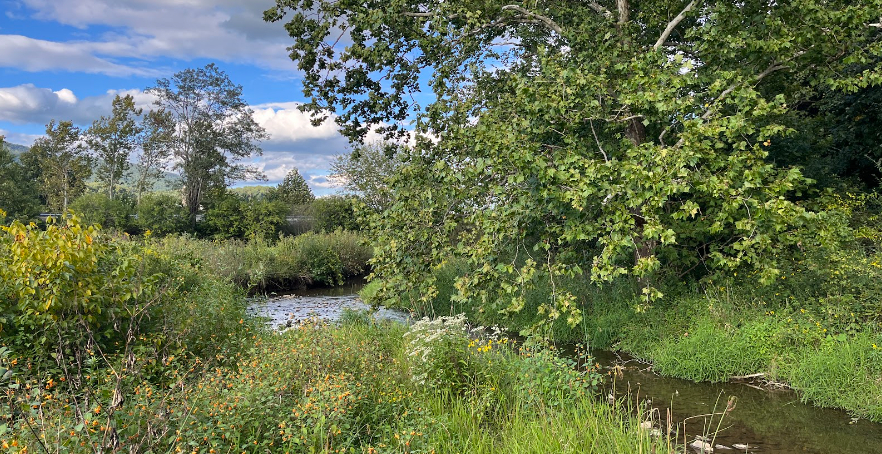If you take a look at your buffer in the middle of summer, you’ll see that a lot has grown! Native grasses, fobs, shrubs, and flowers have covered the areas between growing trees. It may look messy, but this is actually a sign of a healthy buffer! This vegetation attracts helpful insects, pollinators, birds, and other wildlife. While mowing can be useful in the first few years of buffer establishment, it can delay natural tree regeneration. Widespread mowing after year three is not recommended. Embrace the mess and refrain from mowing! Remember, messy and textured is good in nature and indicates a diverse environmentally friendly habitat.
Some buffer areas may have trouble with invasive plant species. In many cases, mowing is not the best strategy to control them. Spend some time in your buffer to identify any invasive species. Blue Ridge PRISM has information to help you identify and control invasive species within your buffer.
There is still lots you can do in the summer to support your riparian forest buffer. Tree tubes are providing shelter and protecting your young trees, giving them a chance to flourish. Weeds, vines, and grass growing inside of tree tubes will compete with the growing tree for sunlight, water, and nutrients and should be hand pulled or cut back. Check on tree tubes to make sure they are upright and that the stakes are hammered in. Create a small trail through your buffers to enjoy watching your trees and shrubs pop out of their shelters. Remember, patience is key when moving toward a stream-side forest! Reach out to your project manager if you have any questions about taking care of your buffer.

